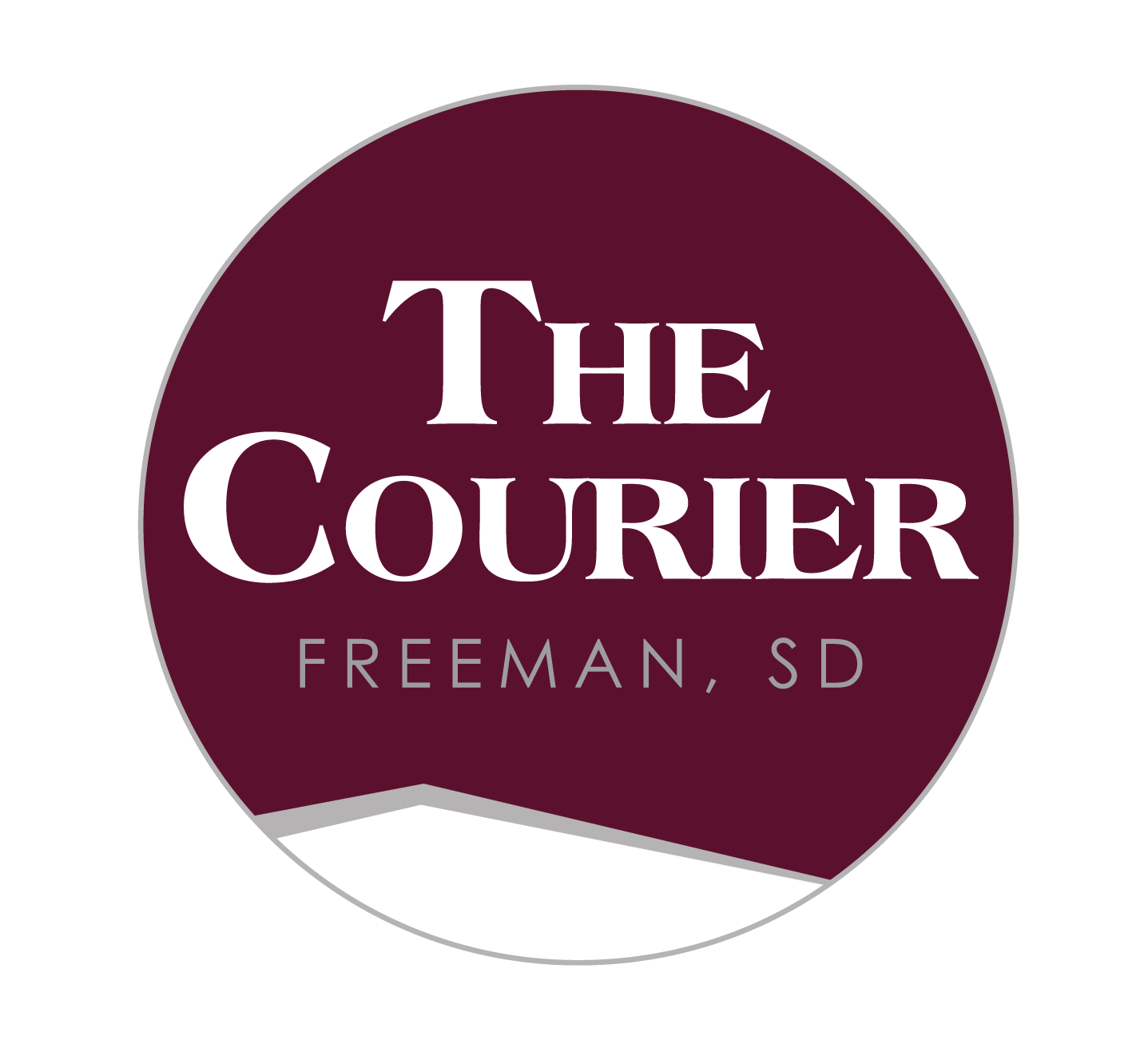PIONEER HALL: BY THE PEOPLE, FOR THE PEOPLE – PART 3
It is the largest and most widely-used building in the freeman community, and how it came to be is remarkable. A story told by Courier Publisher Jeremy Waltner in special partnership with heritage hall museum & archives
Look closely.
You’ll recognize the building as Pioneer Hall in what is obviously an infant iteration, complete with a mint-new concrete marker made by local artist Jonas Kaufman and placed above the still-to-be-finished front entry on the east side of the structure in October 1949. But note the straight line of bricks along the south edge of the steps — a low-slung wall that wasn’t there when the building was dedicated eight months later.
That’s because plans were altered so the front steps would extend the entire width of the four-doored entrance, therefore eliminating the need for the brickwork that had already been completed.
Vernon J. Hofer knows this as well as anybody.
Vernon, who lives in Freeman with his wife, Norma, was a senior at Freeman Academy when Pioneer Hall was completed and one of the student volunteers tasked with brick management after the wall had been removed.
“There was a pile of them,” he says. “It was really time consuming; can you imagine sitting down with a hammer and chisel cleaning the bricks?”
Considering the scope of all that went into the construction of Pioneer Hall, it’s a relatively small and insignificant oh-by-the-way. But it speaks loudly to the organic process that drove the project — a grassroots effort grown from both need and opportunity, and a do-it-yourself approach.
“It was a source of pride,” says Marnette Hofer, a local historian and the director and archivist at Heritage Hall Museum & Archives, thinking back on both the building process and what that would lead to, from a college-sized basketball court that produced wide eyes from visiting high schools to a spacious bookshop that became a community resource.
“I remember all sorts of people were in there buying religious books, cards, gifts, Sunday school supplies — that’s where you went,” said Hofer, who graduated from Freeman Academy in 1983 and from Freeman Junior College in 1985, one year before it closed. “It was so cool.”
But that bookshop and all that it represented — a signature fixture on the south side of the main floor lobby — was just a small sliver of a much larger pie. The decision by school leadership in the later 1940s to move ahead with a new auditorium triggered a domino effect with profound impact.
The decision to build Pioneer Hall was directly related to the establishment of the Freeman Junior College Auxiliary in 1949, which in turn led to the first Schmeckfest 10 years later.
Pioneer Hall helped bridge the gap between the Freeman Junior College and Academy constituency and the larger community who otherwise wouldn’t have any reason to associate with the Mennonite-founded school — a role that the Prairie Arboretum plays today.
Business meetings, family gatherings, wedding receptions and other community events all took advantage of the spacious quarters that Pioneer Hall provided.
Lois Regehr, a 1962 graduate of Marion High School, remembers spending time with her grandfather, Dave Becker, who was a custodian at the college for many years, and riding on the big broom he used to sweep the auditorium floor. She also remembers extensive Becker family reunions held there, and getting to know her great-aunts and great-uncles, as well as older and younger cousins, and family photos on the big landing of steps out front.
“Oh, man, we had fun,” she says.
Pioneer Hall created momentum for a school working hard to maintain its footing in the decades following the financial struggle triggered by the Great Depression, and created stability through the 1960s and 1970s, until the weight of the difficult 1980s ultimately did the college in.
But Pioneer Hall remained a constant and, to this day, stands as a symbol of what it means to be a community together. And that is perhaps the biggest takeaway, 75 years later.
It is estimated that 30,000 hours of volunteer labor was used to help build Pioneer Hall, according to the book “Many Hands, Minds and Hearts: A History of Freeman Junior College and Freeman Academy 1900-2000.”
Norman Hofer, a young boy at the time, remembers helping unload brickcrete that had been hauled from the nearby Toews Brickcrete Plant located two blocks to the east from the back of an International pickup. He even had a brand-new pair of white work gloves that he wore out that day — a day that helped teach him the value of doing something for others.
Twila Hofer, who lives in retirement in Freeman with her husband, Vernon P., remembers the building process and what that looked — and felt— like.
“I was a child of 8 or 9 years when I remember standing on the spot where the steps to the upstairs lobby are, gazing west into the vast hole that was to become the basement of Pioneer Hall,” she remembers. “I wondered, ‘What would anyone do with that much room?!’”
And there’s this, from Joe L. Graber, who graduated from Freeman Academy the year Pioneer Hall opened.
“My dad spent endless evening hours planning with committees, and gave all of his spare daytime to work with many others of the community to build Pioneer Hall,” he writes in “Many Hands, Minds and Hearts.”
“This was a community project where the North Freeman Low Germans, East Freeman Swiss and West Freeman Hutters all gave of their time and energy. Looking back, Pioneer Hall was a tremendous project — for a building of its size to be built with mainly donated help, and the fact that no one was severely injured during the construction, was truly amazing.
“By the grace of God,” he concludes, “it was accomplished.”

